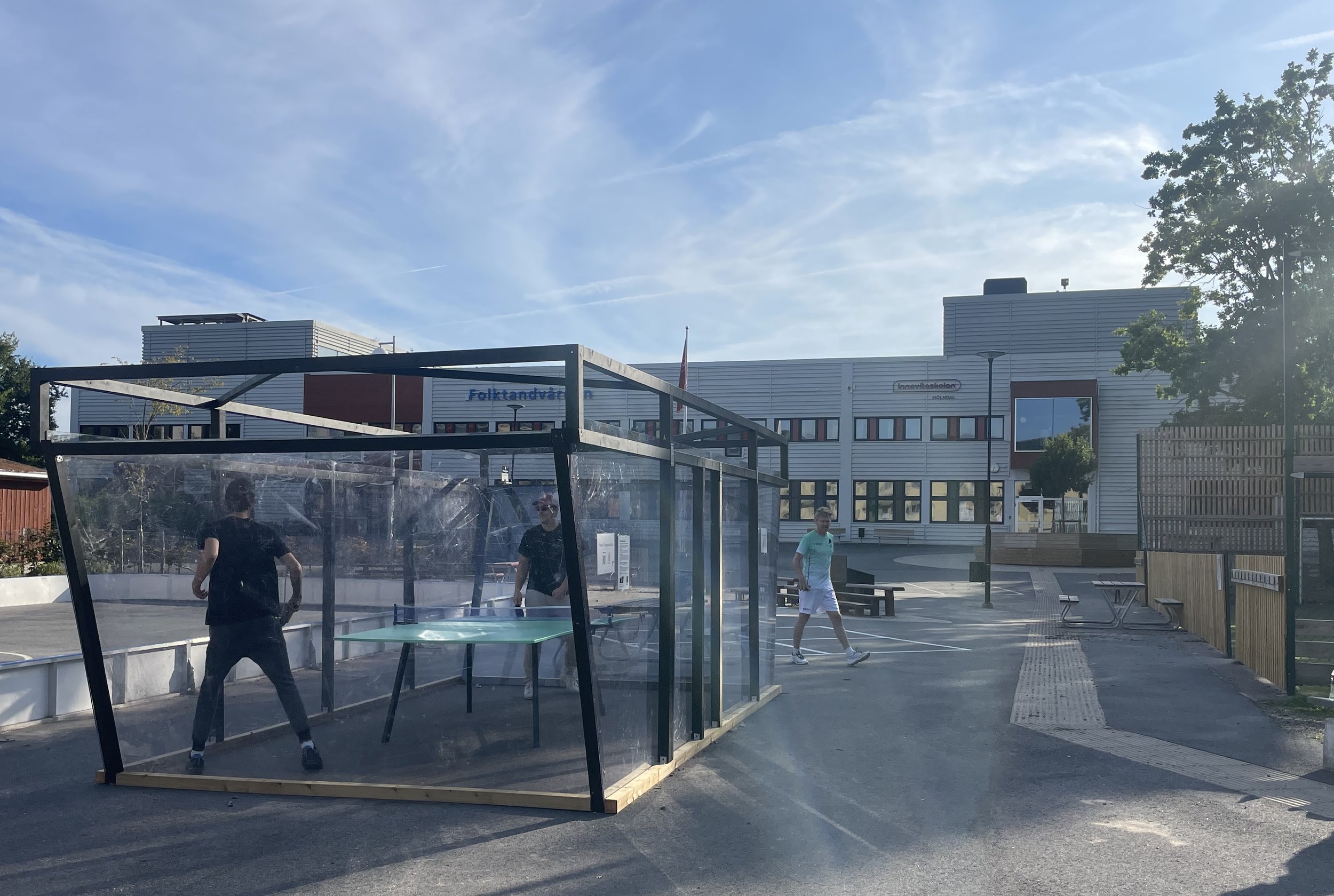
Padel Pingpong for schools
A Fast, Fun, and Inclusive Sport for Every Schoolyard
Bring movement, creativity, and joy to your schoolyard with Padel Pingpong – the hybrid sport that’s taking the world by storm. Easy to learn, exciting to play, and built to last, it’s the perfect all-weather court for both free play and gym classes.
Katarina Särnholm, the principal at Innovitaskolan in Mölndal.
We are very happy about the Padel Pingpong court in our schoolyard. It is used a lot by the students. Even sometimes in the evenings and weekends. We have had it a year now.
Why Schools Love it
Active Play, All Day
Students love the long rallies and unique wall-bounce rules. The ball is larger so it is easier. The court is always in use — before school, at lunch, and after class. No complex rules or experience needed!
Safe & Inclusive
With a special table with rounded edges, and friendly gameplay, Padel Pingpong is ideal for mixed ages and abilities. No need for aggressive competition — just movement, laughter, and engagement.
Small Footprint, Big Value
Fits in a 6×3 meter space – much smaller than a regular padel or basketball court. Perfect for schools with limited space but big ambitions for activity and innovation.
Zero Supervision Required
Once installed, the game explains itself. With easy-to-read rules your staff can focus on teaching — not policing play.
Built for the Outdoors
Engineered for Scandinavian climates with security glass and weatherproof materials. Ready for year-round action.
Table tennis outdoor is challenging on normal days with wind, but the walls in PPP makes it a very popular spot. Multisport equipment is very expensive, PPP courts is more affordable.

What Comes with Your Schoolyard Court
Sturdy court frame with safety glass walls
Special Padel Pingpong table with rounded corners
Bouncy, oversized balls for extra fun and control
Net system & rackets designed for school use
Easy rules poster
Pingpong history
The game was invented in the early days of the 20th century. Despite its popularity throughout the world, Table Tennis did not become an Olympic Sport until 1988. Today there are over 400 million players worldwide - Of this 100 million are in China, where the game is a national passion.
Padel history
The sport was invented in Acapulco, Mexico, by Enrique Corcuera in 1969. It has in a few years grown to a very popular sport in eg Spain, UK, Italy, Germany and Scandinavia.
Padel Pingpong history
The sport was invented 19 nov 2020 in Sweden by Magnus Willner and Erik Magnarsson. After a padel game they played pingpong and started to use the walls. The rallies became much longer, and the number of possibilities increased. The concept was born.
Meet co-founder Jörgen Persson, 5x World Champion.
Padel Pingpong is official partner to Waldner Cup.
JO Waldner and co-founder Erik Magnarsson
Rules
The game is much like table tennis, with the addition that you can choose to hit the ball next to the net in the walls.
Doubles is preferred, but single works too
In doubles, the rule is that a player may take several balls in a row (does not have to be every other) to be able to keep the ball in play longer.
Points, sets & match
The points are counted as in ping-pong, to 11 points in each set. You have to win by 2 points. First to 3 sets have won. "Ready-play", anyone who is ready can serve as long as the opponents are ready. It gives a higher tempo.
Bounce in table and wall
The basic idea is to hit the ball directly over the net or past the net via a wall to hit the opponent's side of the table. If someone hits the ball in the net, floor, ceiling, or bouncing out of the court, the ball is lost. The ball can bounce once in the table but any number of times in the side walls. But not the opponent's short side wall. A serve must always bounce on its own side first and then hit the table on the other side of the net. Net tolls are ok, but not side wall. If you want to make a real art stroke, there is also the possibility to use your own back wall as long as the ball then bounces on the opponent's table top without going into the net or hitting the floor first.
Bonus points
If the opponent misses the table, you have secured one point. Now if you keep the ball alive after one floor bounce and win it, you score a bonus point. If the ball bounces twice on the floor, the ball is over. If the opponent wins it, no bonus point.
The walls create endless opportunities. Have fun!





